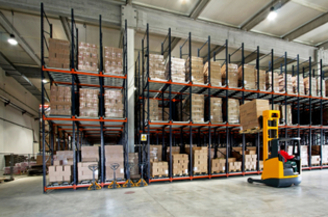Inventory Costing
Inventory costing is a very
important part of the Cost Accountant's position.
The production inventory represents a major investment for most
companies.
Since inventory is valued as an asset, it is recorded on the balance
sheet in the asset section.It is critical to assign proper
value
and properly report it to management. If the value of the parts in
inventory is not accurate, a future write-down of the inventory holding
value may be necessary.
A
very large inventory costing revaluation can
have a very large effect
on the financial statements. Any correction to the inventory value
either increases or decreases asset values and either adds to or
subtracts from expenses.
For example: if we found that some of the
parts in our inventory were over-valued by $3 each, and we have 10,000
parts in inventory, we then need reduce the inventory value by $30,000
to correct the inventory. The entry to do this would be to expense
$30,000 and reduce inventory by $30,000.
Inventory
Components:
Inventory parts are costed based on the part routings and bill of materials.
 How
to value parts in inventory:
How
to value parts in inventory:
- Value usable, non-obsolete parts at the same
cost as current production parts.
- Assure that accounting cost elements are valued properly.
What about parts that are produced at a loss?
- The carrying value of parts produced at a loss
must reflect the
market value (i.e. sales price), not cost. This is the lower
of
cost or market rule.
- After calculation of the lower of cost or
market, an adjusting entry is needed to adjust
inventory to the proper value.
- A dramatic change in the new year's volume of
parts or the product
mix causes a BIG change in the inventory costing valuation and a change
in
burden cost.
- As the volume of business changes, so does our
burden allocation, and
therefore our inventory valuation.
- This is not the fault of the Cost Accountant;
this is a change in
business.
- Be sure to alert the management as soon as you
find out, so they can prepare to explain the change.
- Obsolete parts usually are scrapped or kept at
zero inventory value, according to management decision.
- Sometimes parts are kept for many years, just in case they are ever needed. Of course, this is dependent on room available in the warehouse.